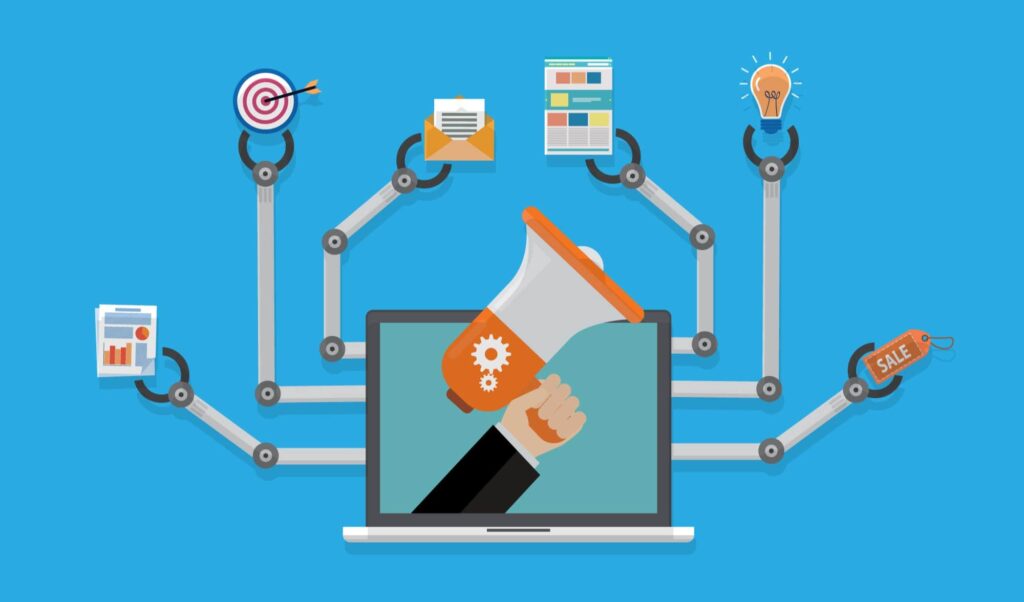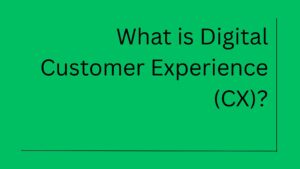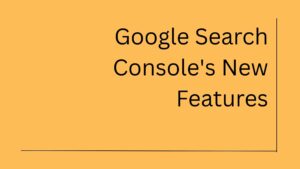Marketing is full of acronyms that sound technical but actually point to something very practical. TTL or Through The Line Marketing is one of those.
You may have heard it tossed around in meetings, pitches, or marketing reports. But what does it really mean? And more importantly, how does it fit into how businesses actually reach people today?
Let’s walk through it all.
First, What Does TTL Marketing Even Mean?
TTL stands for Through The Line marketing. It’s a strategy that combines both Above The Line (ATL) and Below The Line (BTL) marketing tactics.
That might not help much if you’re not familiar with ATL or BTL either. So, quick refresher:
ATL (Above The Line) is broad, mass-media marketing, TV ads, billboards, radio, and national newspapers. It’s about reach, awareness, and casting a wide net. These channels traditionally commanded the largest marketing budgets because they could deliver massive audience exposure in a single campaign. The “above the line” terminology originated from advertising agencies’ accounting practices, where commission-based mass media placements were recorded above a literal line on financial statements.
BTL (Below The Line) is more targeted email campaigns, direct mail, social media ads, influencer deals, and coupons. It’s designed to speak directly to a niche group. BTL marketing emerged as brands recognized the need for more precise, measurable marketing approaches that could deliver specific calls-to-action to carefully segmented audiences. These tactics typically generate higher engagement rates and clearer attribution to sales outcomes, making them particularly valuable for performance-driven marketing objectives.
Now, TTL Marketing brings both approaches together. It’s not either/or, it’s both. It uses mass-media tactics to build awareness and follows through with targeted engagement to drive action. The beauty of Through The Line (TTL) lies in its holistic approach to customer engagement, creating a seamless bridge between broad awareness campaigns and targeted direct marketing. This integration allows brands to leverage the emotional impact and wide reach of traditional mass media while simultaneously capitalizing on the precision and measurability of digital marketing tools, ensuring that a brand’s message doesn’t just reach people but resonates with them at different stages of their customer journey.
Why TTL Even Exists?
Marketing didn’t used to be so fragmented. Back in the day, you could run a print ad in a national magazine or air a commercial during prime-time TV, and that alone could drive results. This was the era of mass marketing dominance, where brands could achieve significant market penetration through a few well-placed traditional media buys.
But the digital age changed that. People don’t consume media the same way anymore. You scroll through Instagram during a commercial break. You get ads based on what you searched five minutes ago. You ignore emails but notice a sponsored YouTube video from someone you trust. The evolution of consumer behavior has fundamentally shifted the marketing landscape, creating what experts call “media fragmentation.”
Consumers aren’t in one place; they’re everywhere. Today’s consumers are digital natives who seamlessly switch between devices, platforms, and content formats throughout their day. They might start researching a product on their smartphone during lunch, continue reading reviews on their laptop at work, and finally make a purchase decision while watching TV at home. This multi-device, multi-platform behavior has rendered traditional single-channel marketing approaches insufficient.
TTL emerged because brands needed to adapt to this complexity. It allows marketers to reach a large audience and follow up with them using precise, measurable tactics. The goal? Not just awareness but conversion. This approach acknowledges that attention is now distributed rather than concentrated, requiring marketers to be present wherever their audience might be. TTL Marketing recognizes that different channels serve different purposes in the customer journey. Mass media builds familiarity and trust, while targeted digital channels drive specific actions and conversions.
Key Features of TTL Marketing
Here’s what defines TTL, stripped down:
Integrated campaigns
Integrated marketing campaigns are not siloed efforts. The mass and targeted components work together. Integration means that every campaign element reinforces the others, creating a unified brand experience that builds recognition and trust over time. This synergy requires sophisticated planning and coordination that goes far beyond simply executing multiple marketing tactics simultaneously.
Customer journey focus
It’s not about just pushing a message; it’s about guiding a potential customer from hearing about a product to considering it, then buying it. The customer journey focus transforms traditional product-centric messaging into customer-centric storytelling, addressing different questions and concerns at each stage of the decision-making process. This approach acknowledges that modern consumers often require multiple touchpoints across different contexts before making purchase decisions.
Cross-channel presence
TTL assumes your audience isn’t in one place. So you meet them across different channels: TV, email, social, web, and even physical stores. Cross-channel presence ensures maximum reach while accommodating different consumption preferences and behaviors. Some people prefer visual content, others respond better to written information, and many need multiple exposures across different contexts before making a purchase decision.
Measurability
The BTL parts of TTL Marketing are typically data-driven. You’re not just launching a campaign and hoping it’s about tracking clicks, conversions, and behaviors. The measurability aspect distinguishes TTL from purely traditional marketing approaches by providing concrete data on campaign performance, enabling real-time optimization and budget allocation adjustments. This data-driven component also allows for sophisticated attribution modeling, helping marketers understand which touchpoints contribute most effectively to conversions.
What Makes TTL Different From Just Doing “A Bit of Everything”?
You might think, “Isn’t TTL just marketing across lots of channels?” Not quite.
TTL is strategic. It’s not just doing ATL and BTL. It’s blending them intentionally so that they support each other. The strategic orchestration that defines TTL Marketing requires sophisticated planning and coordination, where each touchpoint is designed to build upon previous interactions. This means that the mass media components are crafted with full awareness of how they’ll be supported by targeted follow-up activities, while the direct marketing elements are designed to capitalize on the awareness and interest generated by broader campaigns.
Here’s the difference:
Doing both ATL and BTL separately = two teams running their own campaigns, no overlap. When companies “do a bit of everything,” they often create competing messages, conflicting brand experiences, and inefficient resource allocation.
TTL = one campaign with ATL and BTL components working together with consistent messaging and purpose. TTL advertising operates on the principle of strategic sequencing and reinforcement, where the timing, messaging, and visual consistency across all channels are meticulously planned to create a seamless customer experience.
Think of it as a relay race. ATL hands the baton to BTL, and BTL carries it across the finish line. The baton? That’s the customer. This level of integration requires cross-functional collaboration between creative teams, media planners, data analysts, and digital marketing specialists. The result is a multiplicative effect where the combined impact of all elements exceeds the sum of their individual contributions.
When Should You Use TTL Marketing Campaign?
TTL isn’t always the answer. But there are moments where it just makes sense.
You might consider TTL advertising when:
Launching a new product
You need both awareness and action. TTL can build buzz and then drive conversions. Product launches particularly benefit from Through The Line (TTL) because they require both market education and immediate sales momentum the broad awareness components help establish market presence while targeted elements drive early adopters to purchase.
Entering a new market
TTL Marketing helps you introduce yourself broadly, then drill into who’s actually responding. New market entry scenarios demand TTL’s dual approach because brands need to build credibility and recognition in unfamiliar territory while simultaneously identifying and converting the most promising prospects.
Running a big seasonal campaign
Like a back-to-school push, holiday promo, or end-of-year clearance. TTL lets you combine splashy visibility with tactical sales-driving steps. Seasonal campaigns leverage Through The Line’s ability to create widespread excitement while capitalizing on time-sensitive purchase motivations through targeted promotions and personalized offers.
Rebranding
You’re telling a big story, but also want to hold onto existing customers. TTL campaign helps bridge that. Rebranding initiatives require TTL’s comprehensive approach to ensure that the new brand identity reaches all stakeholders while maintaining customer relationships during the transition period.
If you only need to raise awareness and don’t care much about immediate sales, ATL alone might do. If you’re operating on a tight budget and need high ROI, BTL is more measurable and efficient. Through The Line Marketing is ideal when you want the best of both: visibility and action. Understanding when to deploy TTL requires careful analysis of your business objectives, market conditions, and available resources.
The key is recognizing that TTL Marketing works best in situations where there’s a clear need for both scale and precision, such as when broad reach alone won’t deliver results and targeted efforts alone won’t generate sufficient volume.
Benefits of TTL Marketing
Let’s keep it practical. Here’s what TTL offers:
1. Consistent Messaging
TTL makes sure that your brand voice stays the same across channels. That builds trust. When someone sees your billboard, then sees a targeted social ad a day later with the same tone and visual style, it reinforces your presence. This consistency across channels builds brand equity over time, creating a strong foundation for future marketing efforts and increasing the effectiveness of each subsequent campaign. The trust that develops from consistent brand experiences translates into higher customer lifetime value and stronger word-of-mouth marketing.
2. Wider Reach
You reach people where they are, some in mass media, others in digital corners. TTL Marketing doesn’t assume everyone’s looking in the same direction. This approach ensures that brands don’t miss potential customers who might be difficult to reach through single-channel approaches, while also providing backup touchpoints for when primary channels experience disruptions or changes in effectiveness.
3. Better ROI Tracking
Thanks to the BTL parts of Through The Line Marketing (like email, retargeting, search ads), you can see what’s actually working. That means you can tweak the ATL messaging or push harder on channels that convert. The improved ROI tracking capabilities enable more sophisticated budget optimization and strategic planning, allowing brands to identify their most valuable customer segments and channels.
4. Enhanced Engagement
TTL isn’t just broadcasting. It’s interacting. Someone sees your TV ad → visits your site → gets an offer via email → ends up buying. TTL makes that journey smooth. This enhanced engagement transforms passive marketing into active relationship building, creating opportunities for customer feedback, user-generated content, and community building that extend the campaign’s impact beyond immediate sales objectives.
5. Greater Campaign Longevity
TTL campaigns tend to run longer and evolve more flexibly. You can start big, then scale or pivot based on what the data tells you. This flexibility is particularly valuable in a rapidly changing business environment, where agility and responsiveness often determine competitive advantage. The longevity aspect means that TTL campaigns can adapt to changing market conditions, seasonal fluctuations, and emerging opportunities without requiring complete campaign overhauls.
Challenges of TTL Marketing
It’s not all smooth sailing. TTL can be powerful, but also demanding.
1. Higher Cost
Running both ATL and BTL campaigns? That’s not cheap. You’ll need a decent budget to make TTL work well. The higher cost structure of TTL campaigns demands sophisticated budget planning and clear ROI expectations from the outset. Organizations must be prepared to invest not just in media spend across multiple channels, but also in the technology, talent, and coordination mechanisms necessary to execute integrated campaigns successfully.
2. Complex Execution
Coordinating messaging across teams, platforms, formats… It’s a lot. TTL Marketing demands a clear strategy and strong communication across departments. These execution challenges often reveal organizational weaknesses in communication, project management, and cross-functional collaboration that must be addressed before Through The Line (TTL) can succeed. This might require investing in new project management systems, establishing clear roles and responsibilities, and creating regular communication protocols across teams.
3. Data Silos
One team might have TV ad results. Another might be tracking email open rates. Without a unified dashboard or plan, you can lose the thread. Data silos represent a particularly insidious challenge because they can undermine the entire premise of integrated marketing by preventing organizations from understanding how their various channels work together. Overcoming this requires investment in marketing technology platforms that can aggregate data from multiple sources and provide unified reporting capabilities.
4. Creative Fatigue
Keeping the messaging consistent and fresh across multiple touchpoints is hard. If it feels repetitive, people might tune out. Creative fatigue demands ongoing innovation and fresh perspectives, which might require expanding creative teams or working with multiple agencies that can bring different strengths to various channels. Successfully navigating these challenges often separates organizations that can execute TTL effectively from those that struggle with fragmented, inefficient marketing efforts.
How to Create a TTL Strategy That Actually Works?
Let’s not overcomplicate things. TTL (Through The Line) works best when it feels cohesive and intentional.
Here’s how to build one:
1. Define Your Goal
Are you trying to sell something? Build awareness? Enter a new region? Clarity here will shape the whole thing. Goal definition must go beyond surface-level objectives to include specific, measurable outcomes with clear timelines and success metrics. This clarity ensures that all subsequent decisions about channel selection, budget allocation, and message development align with the primary objective.
2. Know Your Audience
Map out where your ideal customers spend time. Do they watch sports on TV? Are they on Instagram or YouTube? Do they open marketing emails? This will help balance ATL vs BTL choices. Audience research should extend beyond demographic data to include psychographic insights, media consumption patterns, and purchasing behaviors that inform both channel selection and message customization.
3. Craft a Unified Message
Your creative concept should work everywhere. You might adjust the copy or imagery per platform, but the core message stays intact. Think of campaigns like Nike’s “Just Do It” or Apple’s “Think Different.” Simple ideas that travel well. The unified message development process requires balancing consistency with channel-specific optimization, ensuring that the core brand proposition remains intact while adapting to different platforms’ unique characteristics and audience expectations.
4. Align Your Channels
Choose ATL platforms for visibility (TV, radio, print) and BTL platforms for interaction (social ads, email, SMS, web retargeting). Each should push toward a common objective. Channel alignment demands understanding not just where audiences spend time, but how they engage with different types of content and what motivates them to take action on each platform.
5. Plan the Customer Journey
Think: what happens after someone sees the ad? Map a clear flow: See billboard → Visit landing page; Watch influencer video → Sign up for free trial; Hear radio spot → Get geo-targeted mobile ad. That kind of intentional path builds momentum. Customer journey mapping should account for non-linear paths and multiple touchpoints, recognizing that modern consumers often research extensively before making purchase decisions.
6. Track and Adjust
Measure reach (impressions, views), measure engagement (clicks, shares, visits), measure conversion (signups, purchases). Then adjust. TTL isn’t set-it-and-forget-it. It’s an evolving process. The tracking and adjustment phase requires establishing clear attribution models and feedback loops that enable rapid optimization while maintaining campaign coherence. This iterative approach ensures that TTL strategies remain responsive to changing market conditions and evolving customer preferences throughout the campaign lifecycle.
A Real-World Example of TTL Marketing
Let’s say a company is launching a new smartwatch. Here’s how TTL might play out:
ATL stage
They run a commercial during the Olympics. Billboards go up in high-traffic urban areas. A print ad appears in Time magazine. The Olympics commercial serves as the foundational awareness driver, reaching millions of viewers simultaneously and establishing the product’s credibility through association with a prestigious event. The billboard placement in urban areas reinforces this message during daily commutes, creating repeated exposure that builds familiarity and brand recall.
BTL stage
They retarget viewers who saw the commercial with Instagram ads. Email marketing goes out to people who clicked on the website. Influencers post reviews and unboxings. A QR code on the billboard takes people to a landing page with a special offer. The Instagram retargeting campaigns use sophisticated algorithms to re-engage viewers who showed initial interest, presenting them with compelling visuals and user-generated content that builds social proof. Email sequences deliver personalized content based on browsing behavior, perhaps highlighting specific features that align with individual preferences.
The first phase builds general awareness and mass exposure. The second phase captures intent and nudges people to act. Together, that’s TTL. This smartwatch campaign exemplifies how TTL creates a domino effect across multiple touchpoints, with each interaction building upon previous ones to create a comprehensive customer experience.
The layered approach ensures that the brand message permeates multiple aspects of the consumer’s daily life, increasing the likelihood of conversion while providing multiple opportunities for engagement at different comfort levels and purchase readiness stages.
Final Thoughts
TTL Marketing isn’t just a buzzword. It’s how smart brands meet people where they are, without forcing a choice between broad reach and direct impact.
It acknowledges that people don’t live in one channel. They flip from TV to phone to email to streaming apps sometimes in a single hour.
TTL (Through The Line) works because it understands that rhythm. It follows along, gently nudging at each stop.
And while it’s not always cheap or simple, when done well, TTL campaigns can be memorable, measurable, and most importantly, effective.
So the next time someone asks about your marketing approach, and you say, “We’re going TTL on this,” you’ll know exactly what that means and how to make it work.
Frequently Asked Questions About TTL Marketing
1. Is TTL marketing suitable for small businesses?
It can be, but cautiously. TTL often requires a larger budget due to its use of both broad and targeted channels. However, small businesses can adopt a scaled-down TTL approach, for example, using local radio ads combined with social media retargeting to create an affordable blend of ATL and BTL strategies.
2. How is TTL different from omnichannel marketing?
They sound similar, but they’re not identical. Through The Line (TTL) focuses on blending ATL and BTL marketing tactics within a unified campaign. Omnichannel marketing, on the other hand, focuses more on delivering a seamless brand experience across all customer touchpoints, regardless of campaign structure. TTL is campaign-driven; omnichannel is customer-experience driven.
3. Can TTL campaigns work without traditional media?
Yes, although traditionally, TTL involved channels like TV or print. Today, digital mass reach platforms (YouTube ads, podcasts, streaming services) can substitute traditional ATL channels. The idea is still to combine broad exposure with targeted follow-ups, whether or not you’re using legacy media.
4. What industries benefit most from TTL marketing?
Industries with wide customer bases and products needing both brand visibility and conversion tend to benefit most. Think consumer electronics, retail, FMCG (fast-moving consumer goods), automotive, and lifestyle brands. However, sectors like finance or healthcare can also use TTL Marketing effectively, depending on campaign goals.
5. Do TTL campaigns need separate teams for ATL and BTL?
Not necessarily. Ideally, one integrated marketing team or agency should handle the entire TTL strategy to ensure consistency. However, in larger organizations, ATL and BTL may be handled by separate teams, requiring strong coordination to avoid mixed messaging.
6. How do you measure the success of a TTL campaign?
It’s best to track both sides:
- For ATL: monitor reach, impressions, and brand lift studies.
- For BTL: track clicks, conversions, sales, email opens, and retargeting effectiveness.
Bringing these datasets together gives a full view of whether your TTL campaign is driving both awareness and action.

The Chief Editor cum author at Intothecommerce, bringing a unique blend of traditional and digital marketing expertise to the team. I oversee all editorial operations, utilizing my comprehensive knowledge to bridge classic marketing principles with modern digital strategies. My focus ensures our content is both timely and fundamentally sound.






1 thought on “What is TTL (Through The Line) Marketing? A Complete Guide”
Very well presented. Every subheader was awesome; it kept adding value to the article. Well, and thanks for sharing the content. Keep sharing and keep motivating others.